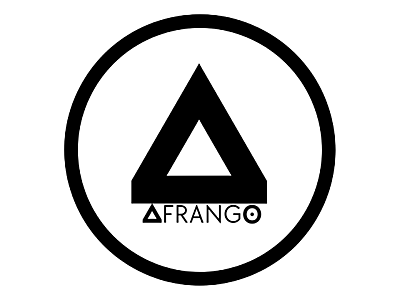How do we retain our Donors?
Posted by Breggie Hoffman on 13 August 2022, 18:05 SAST

 |
 |
 |
It’s the age-old question asked by development professionals everywhere. Your donor retention strategy, getting donors to give again, can be the make or break or your organisation. The confusion persists because frankly, nonprofits still struggle to keep donor retention rates high. By some accounts, only 43% of donors give again the following year. The retention rate for first-time donors plummets even further, to 27 percent.
That being said, don’t lose hope just yet. There are still steps you can take to keep your valuable supporters around and combat donor attrition. In this article authored by Elizabeth Pun on the Classy.org blog she lists best practices and donor retention strategies on how to keep supporters and motivate them to give again.
1. Demonstrate Your Impact
As a donor, nothing is worse than feeling like your donation has disappeared into the abyss. After responding to an appeal, donors are too often left wondering how their money is being used and whether it will actually have an impact. And when you don’t know how your money is being used, you won’t be motivated to keep giving. To prevent donors from feeling this way, organizations must continually demonstrate how supporters’ contributions are making a difference.
In a survey of 2,833 donors, nonprofit technology firm Software Advice, uncovered what practices would encourage future donations, according to donors themselves. When asked what communications they wanted to receive from the nonprofits they support, most respondents (60%) said they wanted impact and success stories. Not only do supporters want effective communication, but also their decision to give again hinges greatly on the organization’s ability to show what it can accomplish. Donors want to know how their money is being applied toward results that are lasting and effective.
Here are a few ways to demonstrate your impact to your constituents:
• Include impact stories in your newsletter: Your newsletter is a great tool you can use to keep donors posted on your programs’ recent successes. These regular stories will help connect the dots between supporters’ contributions and the lasting change they help create.
• Use social media to document live impact stories: You don’t have to wait until your projects are over to show donors what you’ve accomplished. Broadcast your impact story on social media as it takes place, allowing supporters to follow along as your project unfolds step-by-step.
• Provide quarterly, biannual or annual reports: Occasionally provide donors a broader look at how your organization is making strides towards its mission. A larger report that details the effects of your programs against the problem you’re addressing can reinforce the importance of your organization and its work.
2. Get Personal with Your Thank-Yous
Saying thank you should be an obvious part of any organization’s donor retention strategy. It’s surprising, though, how often this part can get glossed over. According to one study, not saying thank you is one of the top reasons why donors choose to leave an organization.
Donors expect the usual auto-receipt. However, try stepping up your communications to show donors they mean much more to you than just a transaction. Add a personalized touch to your follow-up messages to really make your donors feel appreciated.
A handwritten note from staff, for instance, can make supporters feel instantly connected to the people behind your organization. In fact, the Software Advice study found that personalized letters were the top requested form of follow-up outreach. Whenever possible and realistic, make it a priority to follow up donations with personal notes.
If it’s infeasible to send all your donors a personal letter, you can use segmentation to send different groups of donors a tailored thank-you email. The main point is to add a personalized touch to your communications. It’s the small details that help people believe they’re not just donors, but valued partners in your mission.
3. Contextualize Follow-Up
As you consider your donor retention strategies, remember that all donors are important, but they don’t all share the same connection to your organization. The way you choose to follow up with each group of supporters should be individualized to their own giving history. Like any other relationship, your donors are likelier to stay in the conversation when you are communicating in a way that’s relevant to them.
This means you need to segment your donors and build follow-up strategies for each group. You can use a CRM to track supporters’ giving habits, and an email marketing tool like HubSpot or MailChimp can help you set up tailored workflows or campaigns for different groups of contacts.
Try splitting up your contacts by the following criteria:
• The channel of acquisition – When it comes to first time donors, it’s extremely important to tailor your follow up according to the context in which they donated. Did they respond to a direct appeal? Did they donate to a friend’s personal fundraising page? A direct approach might work for someone who responds to your direct appeal, but a third-party donor – one who gives to an organization because of the person asking, and not necessarily because of your appeal – would be better suited for a softer follow-up approach.
• Gift amount – Every gift amount makes a difference, but you may want to craft a special thank-you plan for large donors who commit to greater levels of support. Determine what gift amounts would warrant a personal phone call or letter from a staff or board member.
• Frequency of donations – Make sure to set apart a specialized engagement plan for recurring donors. Lapsed donors should also receive customized messages reminding them of their previous donations.
• The programs they donate to – When you understand which programs donors are passionate about, you can whip up separate thank-you messages and follow-up emails that reference their interests. An easy way to learn your donors’ interests is to add custom questions to your donation pages.
4. Surprise and Delight ‘Em
It’s one thing to keep up a conversation with donors, but it’s another to inspire and delight them. Steer away from making each message an ask, or a story about a person in need, and instead find playful ways to surprise donors and foster positive emotional connections with your organization. Reach out to donors in an unconventional, personalized manner that exceeds their expectations, and you can set your organization apart and strengthen donor loyalty.
To jumpstart your creative juices, here are a few ways you can provide a fresh take o donor communication:
• A humorous, creative email campaign
• Personalized Vine shout-outs (cross-promoted on Twitter for more publicity!)
• Interactive Tweet chats or Google+ Hangouts
• Instagram collages that express appreciation for supporters
5. Create a Feedback Loop
In the for-profit industry, there is a growing distinction between “customer service” and “customer success.” While the former is largely reactive (a customer initiates dialogue, and the organization listens), the latter is proactive (the organization initiates dialogue to understand a customer’s experience). There’s a reason why the latter approach is so effective: when you pay attention and reach out to patrons for feedback, you communicate you value the relationship and want to keep it healthy.
The same principle applies to the nonprofit community. Proactively asking supporters about your organization’s performance shows that you care about their donor experience. It can also give you valuable insight into how you can improve your retention efforts.
One way to create a feedback loop is to send out a survey, perhaps a day or two after a campaign. Check out tools like SurveyMonkey, KwikSurveys, and Typeform (my personal favorite) to build short questionnaires asking for honest responses and opinions about your communications. Not only will people be impressed by your proactive outreach, but you can also learn how you can improve your stewardship strategies.
Tip: Prevent people from abandoning your survey by keeping it to -10 minutes to complete.
Conclusion
When all is said and done, there is no one surefire solution to keeping retention rates high. These steps, however, provide an excellent place to start. Round up your team and continue to brainstorm ideas to buff up your organization’s donor retention strategies. You know your donors best, so tailor your communications accordingly and strengthen those relationships!
Read the this blog on Classy.org to view more links and access further resources from them. https://www.classy.org/blog/want-donors-to-give-again-read-this/
We have downloaded a few of the Classy.org resources already, which you can access on our Fundraising Page. There is loads more on their site though, so please go there to explore.

 .
.